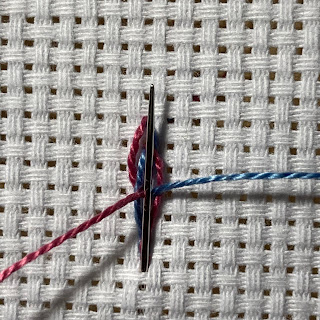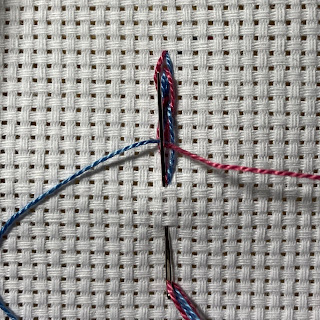My friend Janie left a comment about the Pueblo Indians and the origin of the name of the stitch.
I searched the web and found:
Janie also commented that she had heard Pueblo Stitch can also be called Split Ply Stitch. After some research, I found that there is a weaving technique with that name.
For an embroidery stitch, it also makes sense.
Look what my dictionary says about PLY:
[usually in combination] a strand of yarn or rope: [as modifier] : four-ply yarn.
• the number of multiple layers or strands of which something is made: the yarn can be any ply from two to eight.As the needle is loaded with two strands of thread and we are splitting those two strands for the Pueblo Stitch it makes sense to call Pueblo Stitch Split Ply Stitch.
In my opinion, however, it would also apply to the ordinary Split Stitch as we are then splitting the two-ply twisted strand of a single strand of thread.
Isn't embroidery a most interesting subject?
.....................
My homework:
Aida Sampler
Sunday Stitch School Reference Chart
Mottled Wool Scribble Cloth
Isn't Pueblo Stitch a most beautiful embroidery stitch?


























